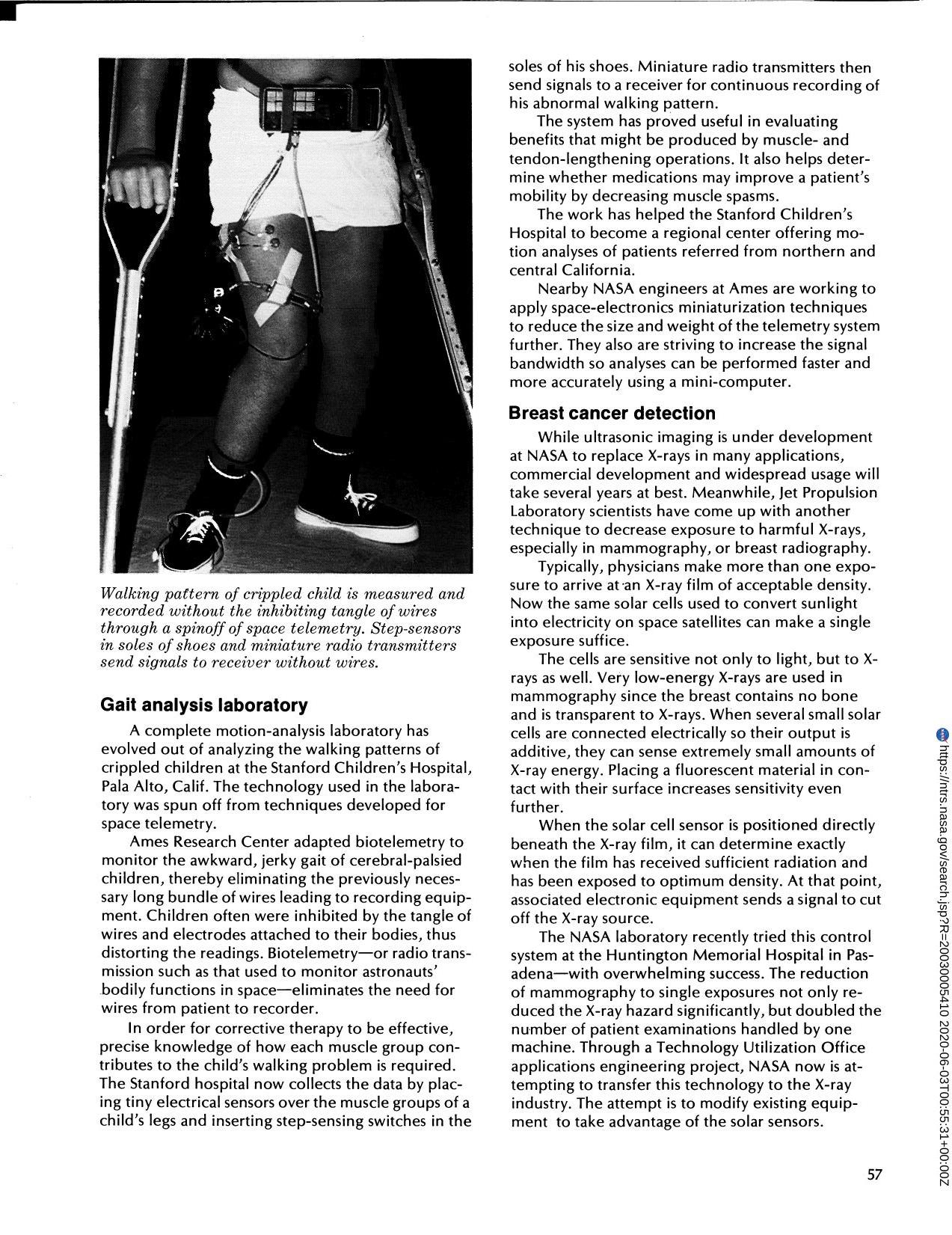
Breast Cancer Detection
NASA's Jet Propulsion Laboratory has come up with a technique to decrease exposure to harmful x-rays in mammographies or breast radiography. Usually, physicians make more than one exposure to arrive at an x-ray film of acceptable density. Now the same solar cells used to convert sunlight into electricity on space satellites can make a single exposure sufficient. When solar cell sensor is positioned directly beneath x-ray film, it can determine exactly when film has received sufficient radiation and has been exposed to optimum density. At that point associated electronic equipment sends signal to cut off x-ray source. Reduction of mammography to single exposures not only reduced x-ray hazard significantly, but doubled the number of patient examinations handled by one machine. The NASA laboratory used this control system at the Huntington Memorial Hospital with overwhelming success.
Full article: http://hdl.handle.net/hdl:2060/20030005410

Breast Cancer Detection

Breast Cancer Detection













